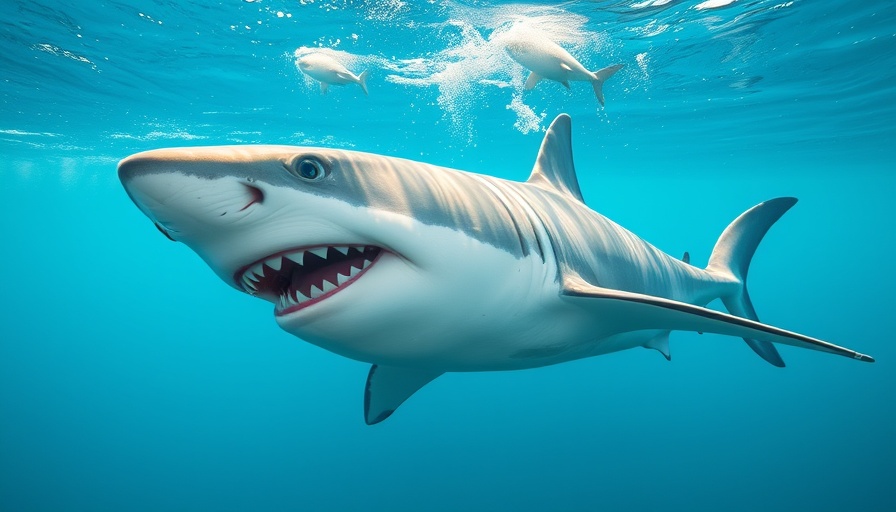
The Return of Great Whites: Dold's Fascinating Journey
This month has seen a notable increase in the activity of great white sharks around Florida, with the latest sighting being an 11-foot sub-adult male named Dold, who recently pinged off the coast of Marco Island for the ninth time this April. Tagged by OCEARCH scientists, Dold's movements have piqued the interest of marine biologists and ocean enthusiasts alike, offering a glimpse into the behaviors of these magnificent apex predators. Tracking these sharks not only contributes to scientific understanding but also sparks conversations about the balance between humans and these powerful ocean dwellers.
Understanding Shark Migration Patterns
Great white sharks demonstrate remarkable migratory patterns, often traveling vast distances in search of warmer waters and plentiful food supplies, particularly as temperatures drop in their northern feeding grounds. This behavioral adaptation highlights the resilience of marine life in the face of changing environmental conditions. Dold, for instance, has ventured over 1,300 miles since he was tagged off the Florida-Georgia border. His presence indicates the thriving marine ecosystem that attracts sharks during the colder months.
The Ecosystem of Florida's Coast: A Shark's Paradise
Florida's coast serves as a critical habitat for migrating sharks during less favorable conditions further north. The abundant seal populations and diverse aquatic life make this region a hotspot for foraging great whites. Sharks like Dold have adapted to the changing seasons, showcasing nature's remarkable ability to respond to environmental stimuli. As beachgoers and boaters enjoy Florida's waters, understanding the ecosystem's intricacies can enhance respect for marine wildlife and their habitats.
The Importance of Conservation Efforts
OCEARCH's efforts in tracking sharks like Dold exemplify the vital intersection of science and conservation. The organization aims to promote ocean health through data collection fundamental to understanding these creatures. Great white sharks are not only fascinating predators but also play a crucial role in maintaining marine biodiversity. Conversations surrounding their conservation can help foster a more profound respect for the ocean and its inhabitants. With knowledge comes responsibility; safeguarding our oceans is imperative for future generations.
FAQs on Great Whites: Understanding Their Presence in Florida
For those curious about the sudden rise in shark activity, here are some frequently asked questions:
Are great white sharks dangerous to swimmers? While great whites are apex predators, serious attacks on humans are rare. Most sightings are not necessarily trouble; they're often just a natural part of their feeding and migratory behavior.
What should boaters be aware of? If boating in areas with recent shark sightings, be vigilant and respectful of their habitat. Avoid attracting fish scraps or debris that may lure sharks closer to your boat.
How can I contribute to shark conservation? Support organizations that focus on marine conservation efforts and raise awareness about respecting ocean wildlife.
Recognizing the significance of great whites and the ecosystems they inhabit is vital for coastal communities, especially as more people engage with Florida's waters for recreation. Whether you're boating, fishing, or simply enjoying the beach, fostering a connection with wildlife can contribute to personal awareness and conservation efforts.
Conclusion: Engage with Nature Responsibly
If you're planning to visit Florida's beaches, keep an eye on local shark activity reports and remember that these creatures are an integral part of the marine ecosystem. Embrace the wonder of observing these magnificent animals in their natural habitat while respecting their space and role within the ocean's hierarchy. As we coexist with wildlife, let us learn more about these amazing great whites and contribute positively to their conservation.
 Add Row
Add Row  Add
Add 




Write A Comment